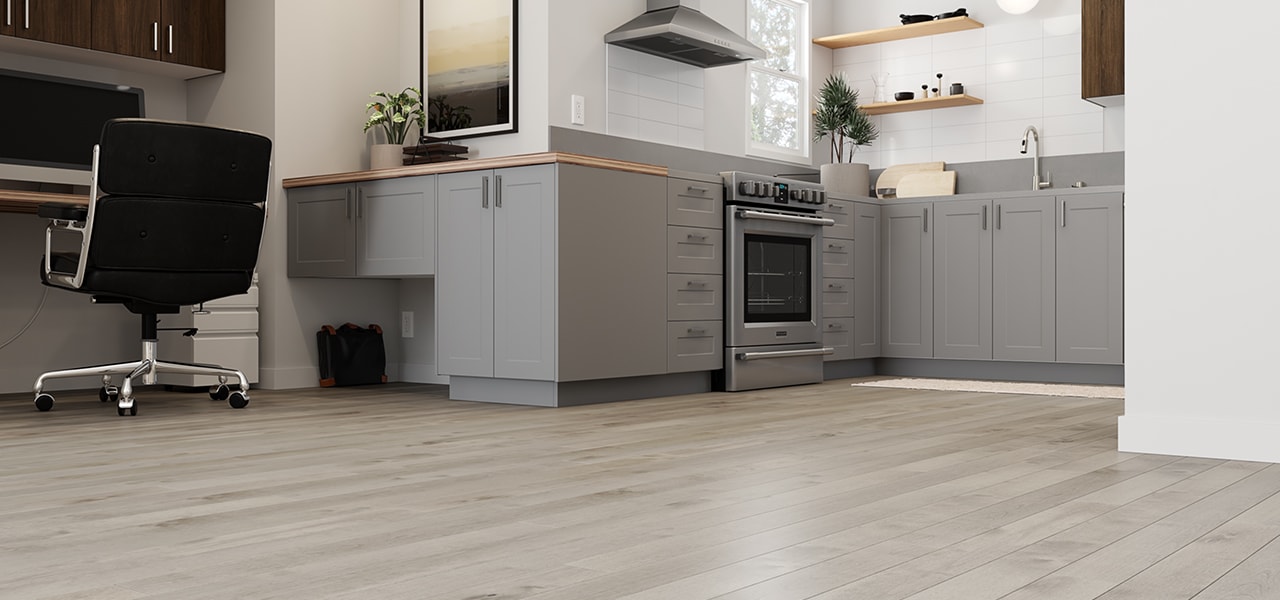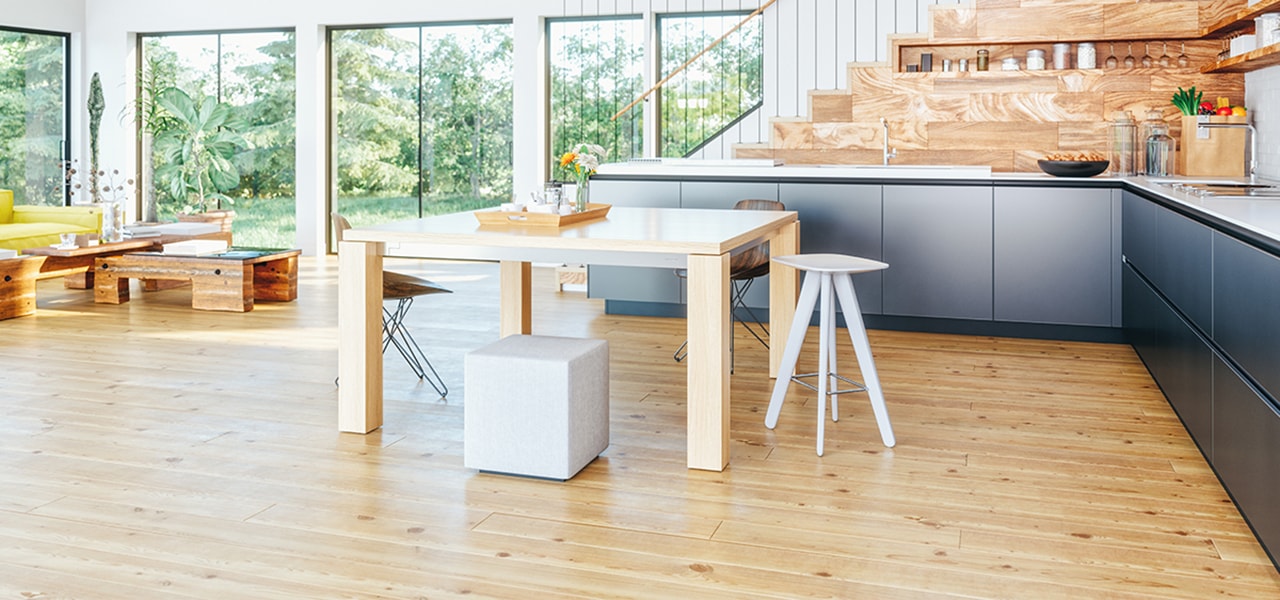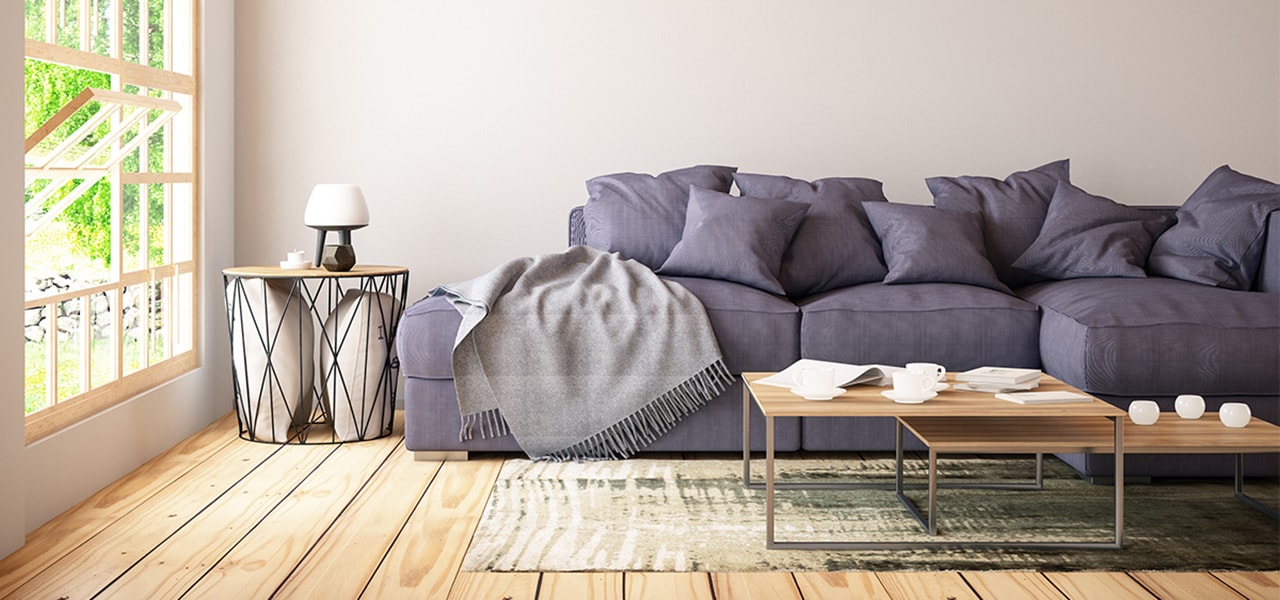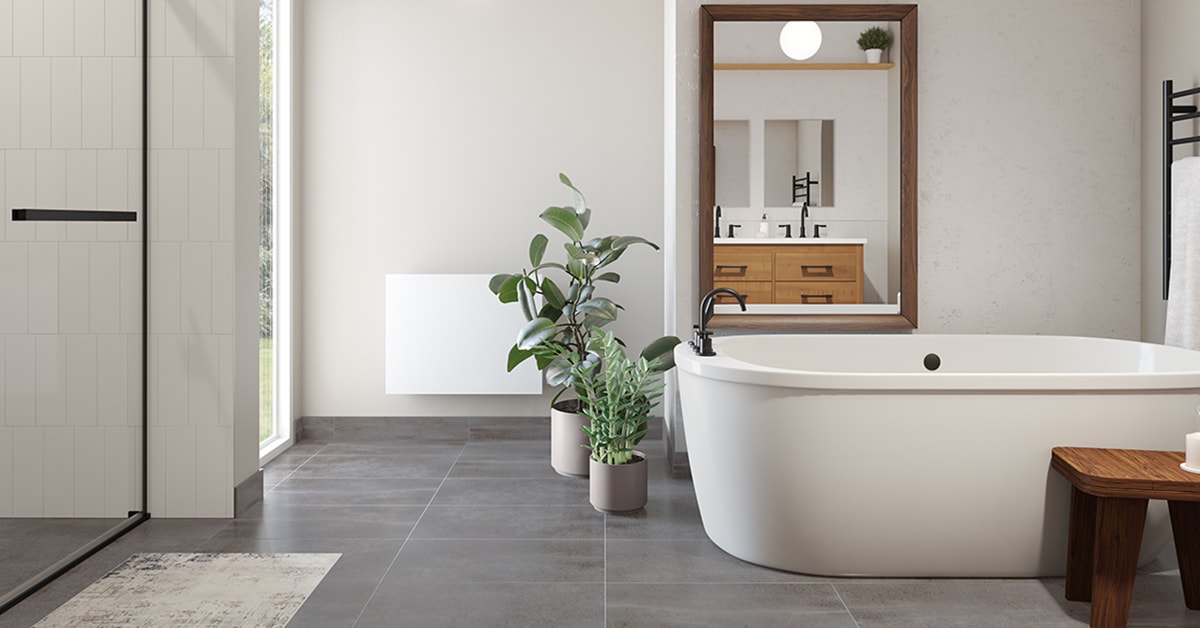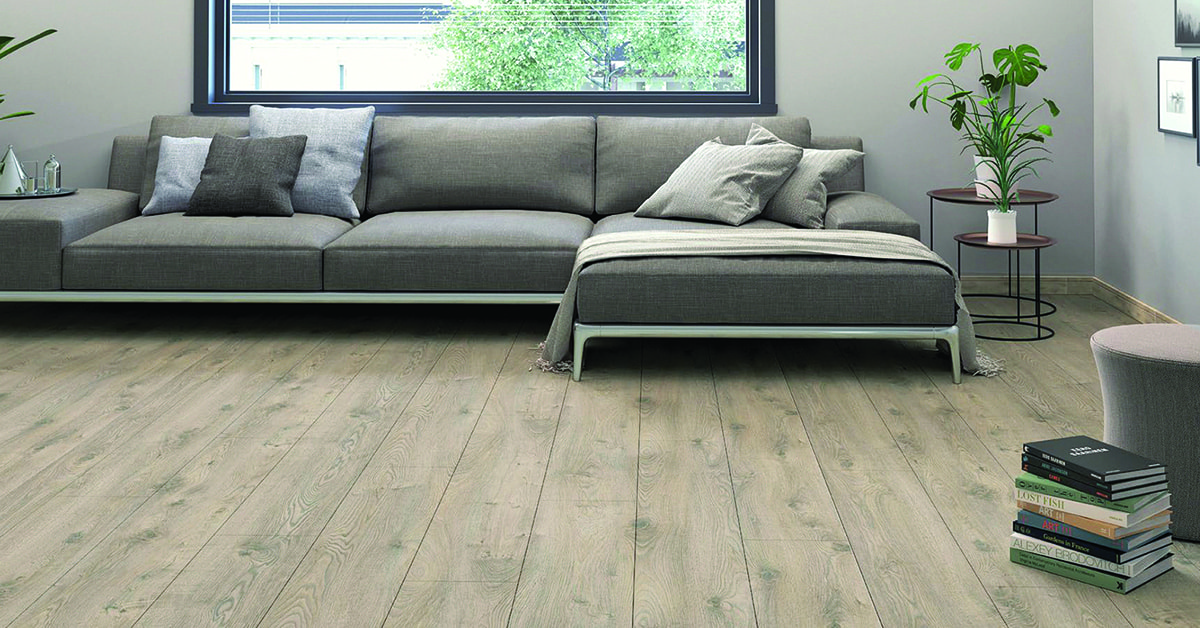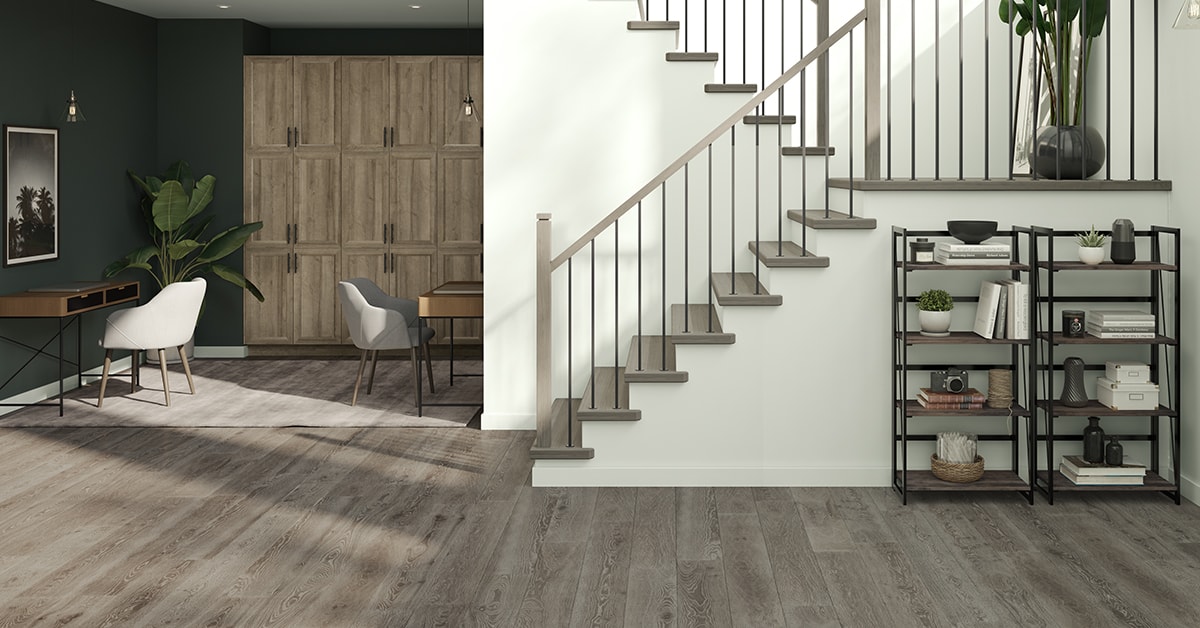Updated on July 14, 2023
Everything You Need to Know About Hardwood Flooring
Beautiful, durable, and always in style, hardwood flooring is a worthy investment. But should you go with oak or birch? Solid hardwood or engineered? If you’re considering hardwood flooring, use this guide to help you choose the perfect type for your home and your budget.
Please click on the closed captioning icon at the bottom of the video player to watch with English subtitles.
Why Choose Hardwood Flooring for Your Home?

Pros and Cons of Hardwood Flooring
Hardwood flooring is the best choice for the living room, dining room or bedroom.
Pros
- Offered in a variety of wood species
- Matches all styles
- Durable and long-lasting
- Increases the value of a home
- Environmentally friendly
Cons
- Higher cost
- Sensitive to humidity and cold
Types of Hardwood Flooring
We’ll walk you through some of the differences between the various types of hardwood flooring.
Construction | Installation | Pros | Finish | Tips | |
Engineered Hardwood | A multi-layer material consisting of a real heat- and pressure-bonded hardwood top layer veneer. The 2 or more additional layers are made from medium-density fibreboard (MDF) or high-density fibreboard (HDF). | Because it is resistant to cupping and warping, engineered hardwood can be used in kitchens, basements, and other areas that experience changes in moisture and temperature. | A multi-ply design lends engineered hardwood excellent dimensional stability and uniformity. | Can be installed over concrete, making it a great choice for condos. | |
Locking or “Floating” Hardwood | An engineered hardwood floor that comes with a locking tongue-and-groove system. | Can be installed without nails, staples, or adhesive. Great for DIY projects. | Installation is easy: just roll out a moisture barrier underlayment and place the planks. | Choose a floor that can be sanded and refinished to give it your own design stamp. | |
Solid Hardwood | Solid planks milled from a single piece of wood. | For a smoother transition between rooms, choose prefinished flooring with thinner planks. | Comes in both prefinished and unfinished varieties. | Can be installed over wood planking, plywood, Oriented Strand Board (OSB), or above grade. Best for rooms with consistent temperature and humidity. |
Smart Saving Tips
Engineered hardwood is also a great alternative to regular hardwood flooring. It is made up of a hardwood surface atop layers of plywood and is typically less expensive and less sensitive to humidity.
About Hardwood Flooring
Hardness
The Janka hardness test helps categorize different wood species. Wood hardness is an important element to consider based on the space in which the floor will be installed. The lower the rating on the Janka scale, the more prone the floor will be to scratching. A wood species with a low Janka rating will therefore not be recommended in a high-traffic area.
Grade
The grade of wood gives us information on the wood’s appearance before stain or varnish. The grade gives us information on its colour, presence of knots, or other visual characteristics the wood may have. Consequently, the higher the grade of wood (which gives a more consistent look), the more expensive it is.
Plank Widths
Choose planks of the same width or mix them up to go with your decor style. If you choose wider planks, make sure they are longer as well to give the room a balanced look.
Edge Types
- Square Edges. Uniform, seamless, and easy to maintain, square edges line up flush against one another.
- Bevelled Edges. With their distinctive V-shaped groove, bevelled edges lend the room a rustic aesthetic. They can also help hide subfloor irregularities.
- Micro-Bevelled Edges. A shallower and less noticeable V-groove makes micro-bevelled edges a more versatile option for a variety of room styles.
Colour and Grain
The colour and grain of hardwood vary according to the species, the most popular being oak, maple, and birch. Yellow birch has been steadily gaining in popularity due to its affordable price and distinctive colour variation.
Surface Textures
- Sanded and factory-finished, smooth-textured floorboards enjoy the greatest popularity. The smooth finish has an elegant appeal, especially in darker shades. However, it can also show scratches and dents more easily.
- Go for the charming antique look with a distressed texture.
- Homes with children, pets, or many occupants should choose a scraped finish that will more easily hide scratches and dents.
- Wire-Brushed. For a balance between a smooth and scraped finish, go with wire-brushed flooring.
Gloss Level
Gloss is a reflection of how shiny the hardwood floor is, meaning how much light or lustre it reflects at a 60° angle.
In ascending gloss, the 4 levels are:
- Matte (25% lustre): The low sheen of matte flooring hides wear and tear, making it a great choice for high-traffic areas.
- Satin (40% lustre): The slight shimmer, but excellent durability, of a satin finish makes it the most popular home flooring option.
- Semi-Gloss (50% lustre): The beautiful shine of a semi-gloss floor offers a good compromise between the maintenance of a higher gloss and the practicality of a lower one.
- Glossy (70% lustre): The gorgeous lustre of a glossy finish will show wear easily but is also great for making a striking statement in low-traffic areas like the dining room.
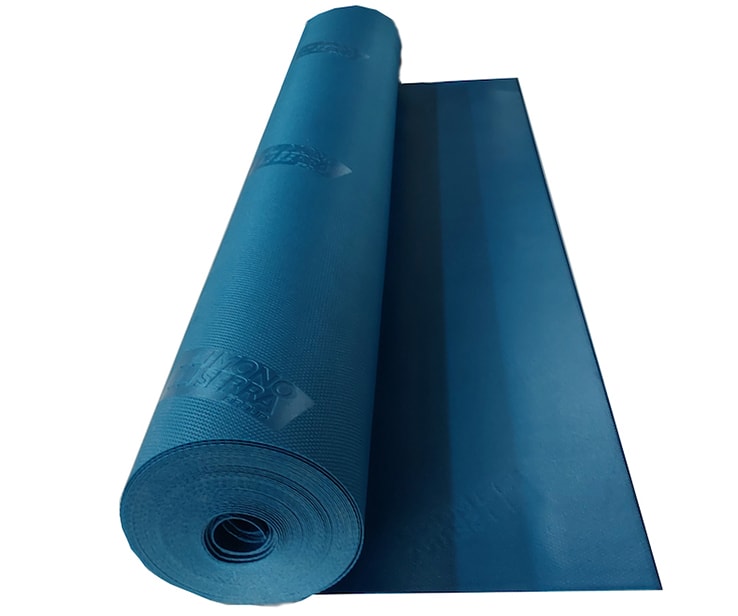
Subfloor Vs. Underlayment
A wood layer that rests on the flooring joists and acts as a stable, structural base for your hardwood floor. The subfloor is typically only installed by professional installers and builders.
Underlayment is…
A protective and sound-dampening barrier installed between the subfloor and the uppermost flooring. The type of flooring you choose will determine the type of underlayment you need.
DIY or Hire the Professionals?
Out of time? Our team of experts is at your disposal to carry out a perfect installation.









